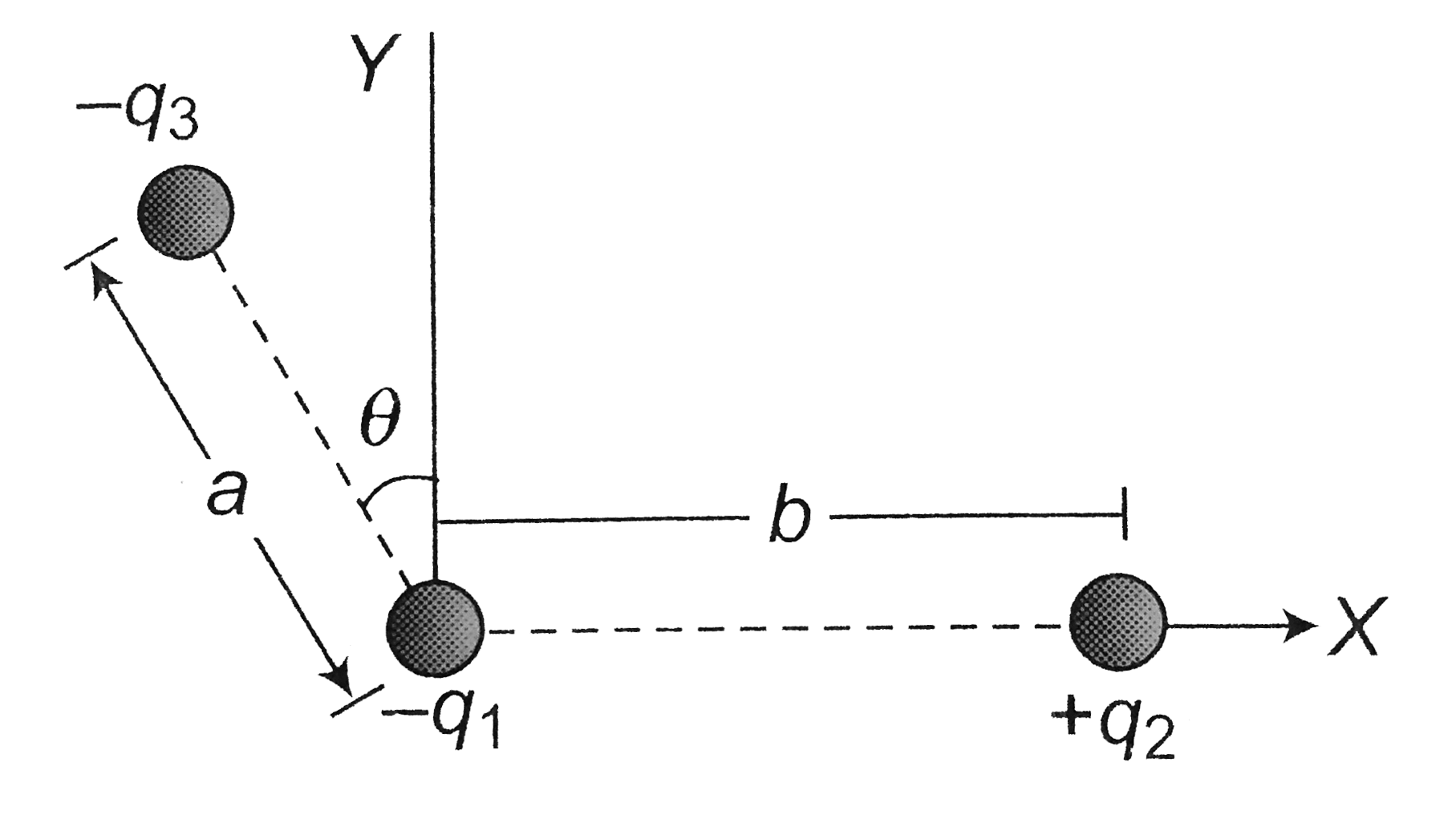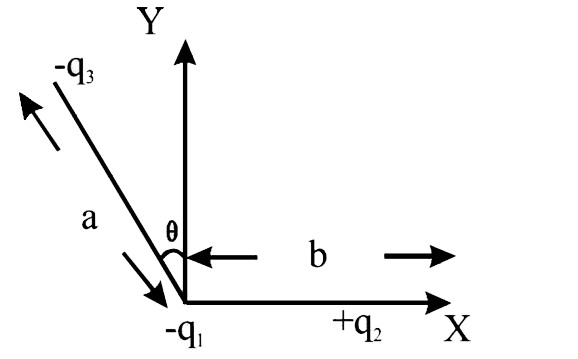Assertion: Two charges q1 and q2 are placed at separation r. Then magnitude of the force on each charge is F.
Reason: Now a third charge q3 is placed near q1 and q2. Then force on q1 and q2 remains F.
if both Assertion and Reason are true and the Reason is correct explanation of the Assertion.
If both Assertion and Reason are true but Reason is not the correct explanation of the Assertion.
if Assertion is true, but the Reason is false.
if both Assertion and Reason are false
The correct Answer is:b
Force of interaction between two charges is independent of presence of other charges.
Topper's Solved these Questions
- BOOK - A2ZCHAPTER - ELECTRIC CHARGE, FIELD & FLUXEXERCISE - AIPMTNEET Questions24videos
ELECTRIC CHARGE, FIELD & FLUX
- BOOK - A2ZCHAPTER - ELECTRIC CHARGE, FIELD & FLUXEXERCISE - AIIMS Questions26videos
ELECTRIC CHARGE, FIELD & FLUX
- BOOK - A2ZCHAPTER - ELECTRIC CHARGE, FIELD & FLUXEXERCISE - Problems Based On Mixed Concepts40videos
ELECTRIC CHARGE, FIELD & FLUX
- BOOK - A2ZCHAPTER - DUAL NATURE OF RADIATION AND MATTEREXERCISE - Section D - Chapter End Test30videos
DUAL NATURE OF RADIATION AND MATTER
- BOOK - A2ZCHAPTER - ELECTRIC POTENTIAL & CAPACITANCEEXERCISE - Section D - Chapter End Test29videos
ELECTRIC POTENTIAL & CAPACITANCE
Similar Questions
When two charges q1andq2 are kept at some distance apart, force acting between these charges is F. If a third change q3 is placed quite close to q3 is placed quite close to q2 what will happen to the force between q1andq2 ?
View SolutionConsider the charges q,q and -q placed at the vertices of an equilateral triangle of each side l. What is the force on each charge ?
View Solution
Knowledge Check
- Question 1 - Select One
Three charges −q1,+q2 and −q3 are placed as shown in the figure. The x-component of the force on −q1 is proportional to
 Aq2b2−q3a2sinθBq2b2−q3a2cosθCq2b2+q3a2sinθDq2b2+q3a2cosθ
Aq2b2−q3a2sinθBq2b2−q3a2cosθCq2b2+q3a2sinθDq2b2+q3a2cosθ - Question 2 - Select One
A charge q1 exerts some force on a second charge q2 If a third charge q3 is brought near q2, then the force exterted by q1 on q2
AdecreaseBincreaseCremains the sameDincrease, if q3 is of same sign as q1 and decrease, if q3 is of opposite sign as q1 - Question 3 - Select One
Three charges −q1,+q2 and −q3 are placed as shown in the figure. The x-component of the force on −q1 is proportional to
 Aq2b2−q3a2sinθBq2b2−q3a2cosθCq2b2+q3a2sinθDq2b2+q3a2sinθ
Aq2b2−q3a2sinθBq2b2−q3a2cosθCq2b2+q3a2sinθDq2b2+q3a2sinθ
Two point charged bodies q1=3μC, and q2=4μC are separated by 2 m in air. Find the magnitude of electrostatic force between them.
View SolutionA positive point charge q1 is placed at (a,0) and another positive point charge q2 is placed at (0,a) . Find the force acting on q1.
View SolutionThree charges −q1, +q2 and −q3 are placed as shown in the figure. The x-component of the force on −q1 is proportional to
 View Solution
View SolutionTwo charge Q1 and Q2 are placed at the points A and B having separation r lying inside and outside the unchanged conducting shell. The force on Q1 is F and that on Q2 is f.Then
View SolutionTwo point charges q1=+2C and q2=−1C are separated by a distance d. The position on the line joining the two charges where a third charge q=+1C will be in equilibrium is at a distance
View Solution

